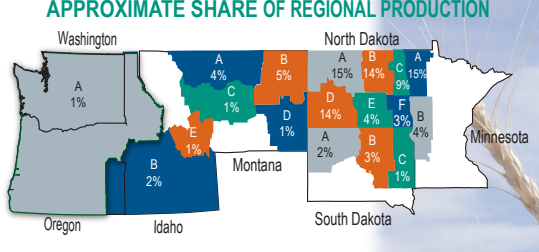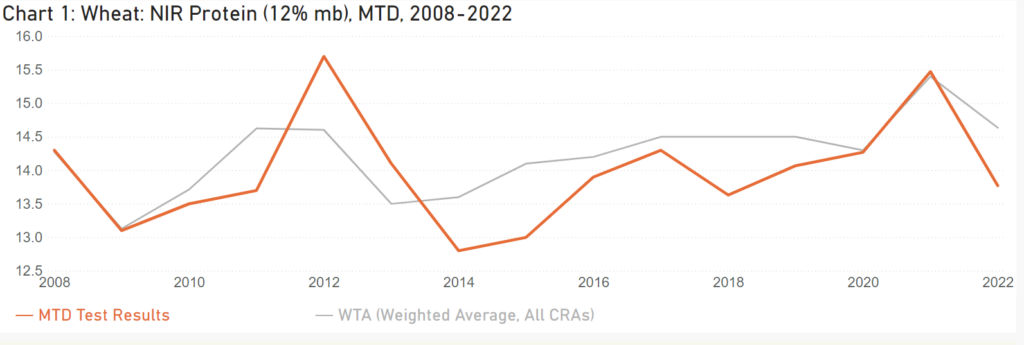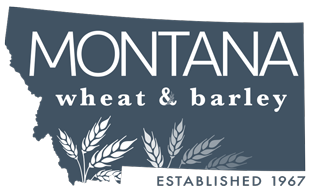A Deeper Look into Montana’s Historical Hard Red Spring Wheat Protein Content.
– Sam Anderson
The Montana Wheat & Barley Committee collects hundreds of spring wheat samples throughout the state. Those samples get graded, flour tested and dough testing. Our international markets each year are eager for the results.
The results are separated into five distinct growing regions arranged by county. Each region has an approximate share of the total U.S production. In 2022 Montana’s regions A and B make up 9% the U.S spring wheat crop.

Looking at the protein levels (12% MB) by region from 2008-2022. The distinct spring wheat regions with prospective counties are shown in the graphs below, compared to the U.S weighted average.





Protein content is one of the key parameters for a shipment overseas. The optimal range for spring wheat protein is 14%-15%. While protein is critically important, significant blending occurs at the local elevator, export elevator, and finally the flour mill. Each blending process takes a step towards the end use product. We consistently hit protein targets in the pacific northwest. Lesser-known targets that milling and baking quality specialists look specifically for are varietal differences. Varieties can genetically vary in milling and baking traits that are critical for the baker, here are two that are frequently looked at:
Development Time: Is the first addition of water to the maximum consistency immediately prior to the first indication of weakening. Measured in minutes.
Baking Absorption: Water required for optimum dough baking performance, expressed as a percent of flour weight on a 14% moisture basis.
Two varieties with the same exact protein content can very significantly in those two traits. Millers and bakers express the importance of being able to add as much water as possible to the grain and flour. Why? Water is cheap! Bakers are also looking at development time for optimizing commercial mixers. Bakers are highly automated now, and if a particular variety needs five more minutes of development time it can throw off the whole factory. Development time can be preferred depending on the product, some like it fast while some like it slow.
The farmer is looking for a higher protein for a potential premium at the elevator. The miller is looking for consistently blended grain with exact protein specs. The baker is looking more specifically to optimize their process by using varietal data to determine trends for specific products.
There is so much more that goes into protein than just the initial percentage that the farmer gets on their delivery ticket. We are working on all aspects of protein, specifically genetic variation between varieties grown in Montana. The more desirable our spring wheat is to the baker, the stronger the demand. What happens when there is increased demand? You guessed it, higher overall price received by the farmer.
The term “value added” has been quite trendy lately. Most people define value added as an extra processing step that takes place within the state. While processing locally can provide extra value to a product; Montana’s wheat crop alone feeds 90 million people through the world. Our geographical location to the Pacific Northwest is the key to filling this demand. Export facilities on the coast blend wheat prior to export, ensuring that our Pacific Rim customers receive consistent quality with each shipment. It’s this consistent quality that drive a premium price here in the Treasure State.
